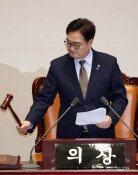Korean businesses make largest-ever foreign direct investment
Korean businesses make largest-ever foreign direct investment
Posted September. 28, 2019 09:16,
Updated September. 28, 2019 09:16
According to data, the greatest-ever foreign direct investment (FDI) has been made by Korean businesses and investors in the overseas market throughout this year, which is in stark contrast to decreasing FDI in the Korean market.
The Ministry of Economy and Finance announced on Friday that the volume of Koreans’ FDI in other countries increased by 13.3 percent to record 15.1 billion dollars year-on-year in the second quarter of the year, making the figure the largest ever since these data were first collected in 1980. Previously, the first quarter of this year saw a record high of 14.11 billion dollars, from which the Q2 volume rose by 6.3 percent to hit another record high.
Since the second quarter of last year, FDI in other countries by Koreans has bounced back. The investment volume recorded a negative year-on-year growth between the fourth quarter of 2017 and the first quarter of 2018. Then, it has begun rising by 20 to 30 percent on a quarterly basis since the second quarter of 2018. The Hyundai Research Institute has analyzed that Korean businesses are shifting their attention to other countries from the domestic market on account of a rigid labor market, regulation burdens and ineffective regulation reforms.
By investment destination, 3.2 billion dollars were directed to the U.S. market – a 14.7 percent up from the same period of last year, as M&A deals have increased to expand global sales networks. Compared to last year, Korea’s investment in China grew by 123.7 percent to record 2.08 billion dollars as large semiconductor and electronics makers have spent more on facilities and infrastructure to make inroads into the Chinese market. The investment in Cayman Islands, one of tax havens, dropped by 25.8 percent to 2.41 billion dollars year-on-year.
Overseas investment can secure the production basis for manufacturers and pave the way for the overseas market. Nevertheless, it can deteriorate both Korea’s job market and industrial ecosystem in a situation where investments in the domestic market are on the decline while only FDI in other countries has risen significantly. According to the Q2 national income data estimated by the Bank of Korea, facility investment and construction investment shrank by 7 percent and 3.5 percent, respectively, on a year-on-year basis. In the first half of the year, FDI in the Korean market showed a decrease of 45.2 percent compared to the same period of last year. The volume of FDI in the Korean market over the first half of this year recorded 5.61 billion dollars at the time of arrival, according to the Ministry of Trade, Industry and Energy in July. Although the South Korean government has announced that the figure still hovers above the 10-year average, making a long-term increase, experts concern that it showed a marked drop.
Hye-Ryung Choi herstory@donga.com







